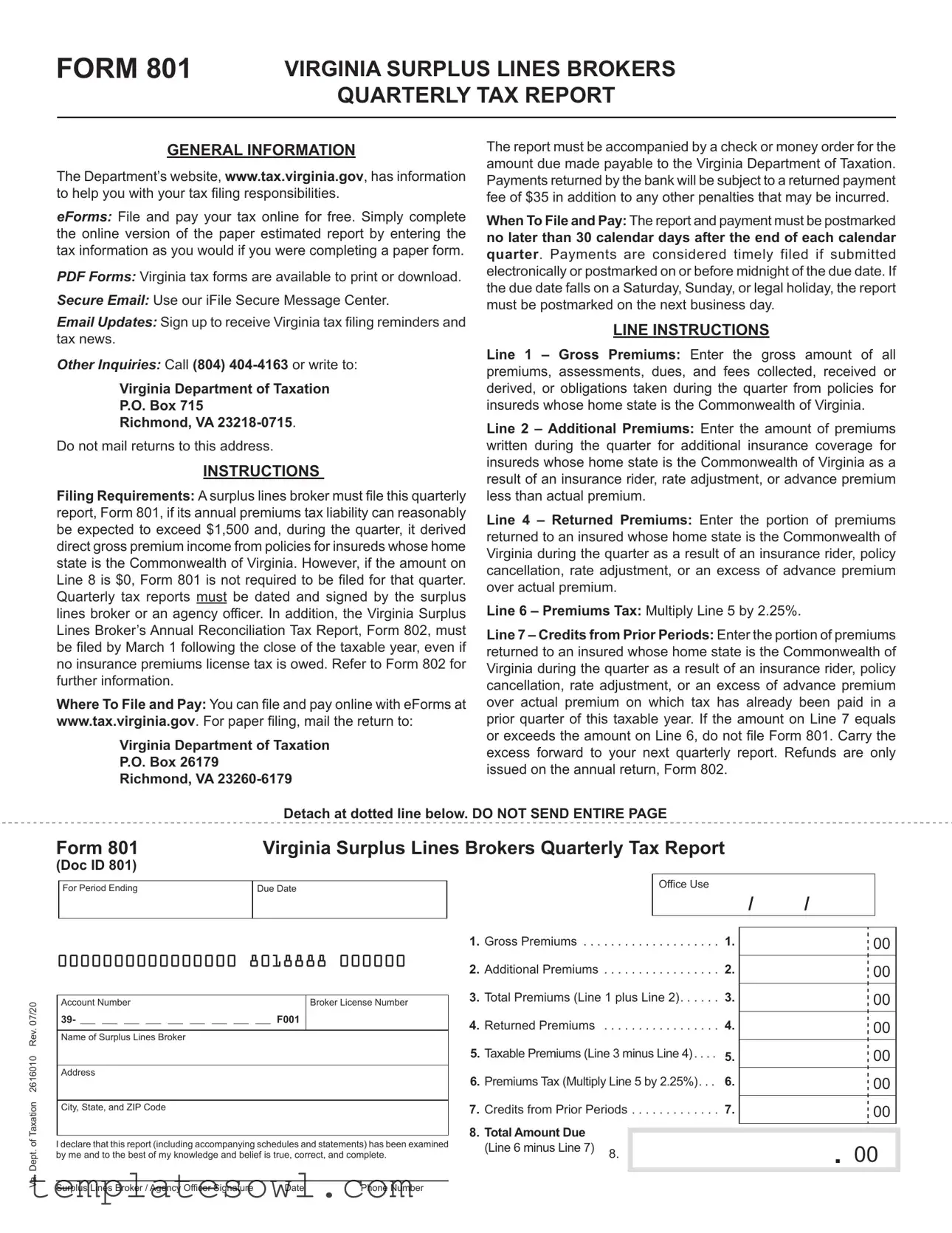What is the Virginia Form 801?
The Virginia Form 801 is the Surplus Lines Brokers Quarterly Tax Report. This form is required for surplus lines brokers who expect their annual premiums tax liability to exceed $1,500. It reports gross premium income from policies for insureds based in Virginia during each calendar quarter.
Who needs to file Form 801?
Surplus lines brokers must file Form 801 if they anticipate an annual premiums tax liability of over $1,500. Additionally, the broker must have derived direct gross premium income from insureds whose home state is Virginia during the reporting quarter. If no premiums are collected (Line 8 shows $0), filing is not necessary for that quarter.
When is Form 801 due?
The completed Form 801 must be postmarked no later than 30 days after the end of each calendar quarter. If the due date falls on a weekend or legal holiday, the report can be postmarked on the next business day and still be considered timely.
How do I file and pay for Form 801?
You can file and pay online for free through Virginia’s eForms at www.tax.virginia.gov. For paper filing, send the completed form and a check or money order to the Virginia Department of Taxation at P.O. Box 26179, Richmond, VA 23260-6179. Ensure that the payment is made payable to the Virginia Department of Taxation.
What if I miss the filing deadline?
Late filing may result in penalties. If you do not submit your Form 801 by the due date, you could incur additional fees. It is important to file on time to avoid these complications.
What information do I need to complete Form 801?
To fill out Form 801, you will need to provide information about gross premiums, additional premiums, returned premiums, and the corresponding tax calculations. Ensure all amounts are accurate, as you must sign to attest to the truthfulness of the information provided.
What is the tax rate applied on premiums reported in Form 801?
The premiums tax rate is 2.25%. You will calculate your premiums tax by multiplying the taxable premiums (Line 5) by this rate to determine the amount due (Line 6).
What happens if I have credits from prior periods?
If you have credits from previous periods, enter this amount on Line 7. If the credits equal or exceed the premium tax owed (Line 6), do not file Form 801 for that quarter. Carry over any remaining credits to the next quarterly report. Refunds are only processed through the annual reconciliation tax report, Form 802.
Where can I find assistance with Form 801?
You can visit the Virginia Department of Taxation’s website for additional information. If you have questions, contact them by phone at (804) 404-4163 or send correspondence to P.O. Box 715, Richmond, VA 23218-0715. However, do not mail your returns to this address.

